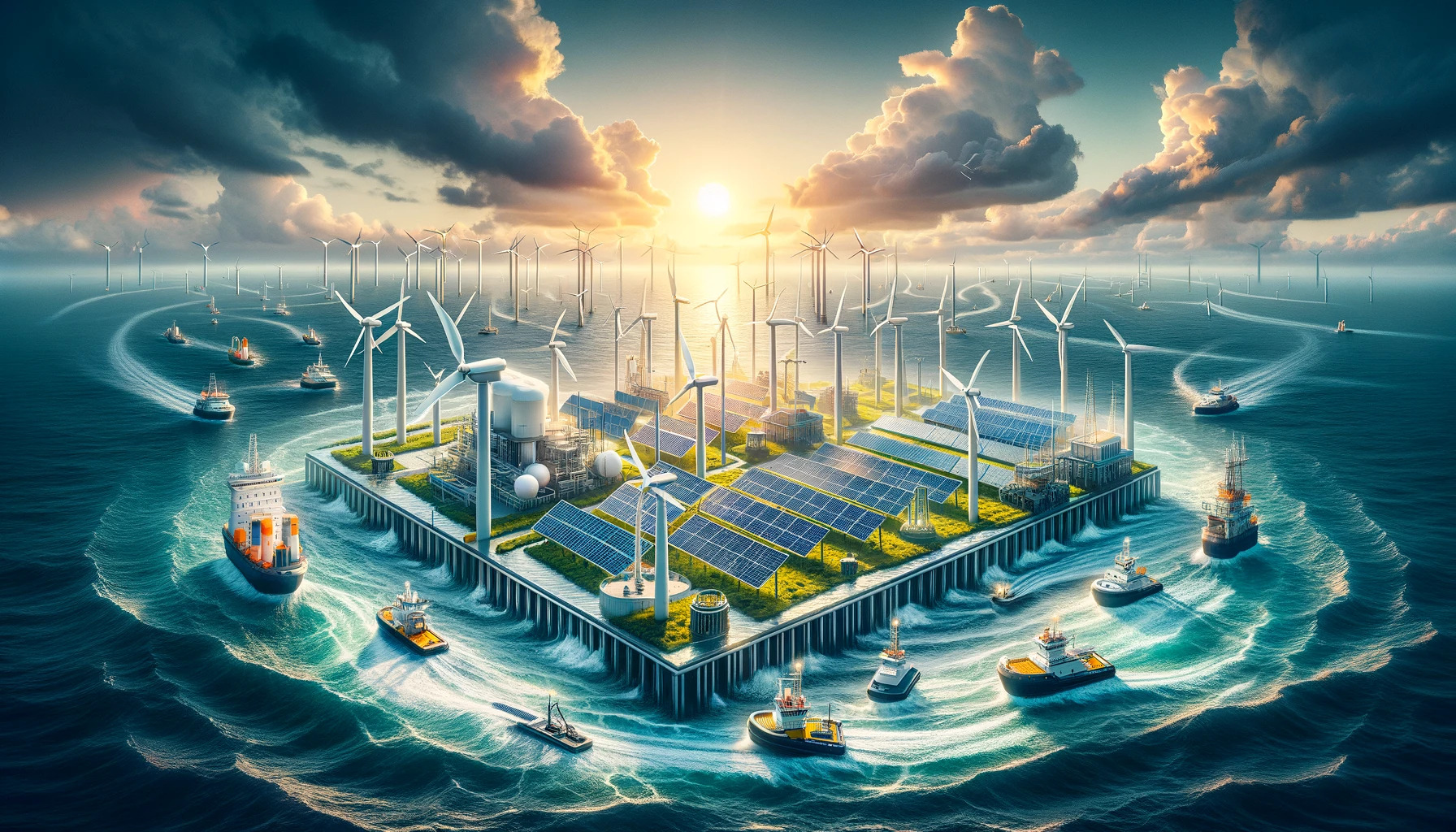

Harnessing the Seas: Unveiling the Power of Offshore Renewable Energy
Introduction
As the world pivots towards sustainability, the ocean’s boundless energy presents a viable solution. Offshore renewable energy transcends beyond traditional sources, tapping into wind, wave, tidal powers, and the emerging sector of solar energy, showcasing the ingenuity of harnessing nature’s force. This exploration delves into the origins, workings, and technological advancements of these power sources, highlighting their global prevalence.
Wind Offshore Energy: The Pioneers of Marine Renewables
Origin and Technology: The quest for offshore wind energy began as an extension of land-based wind turbines, seeking stronger, consistent winds at sea. The technology involves large turbines anchored to the ocean floor or floating platforms, capturing wind to generate electricity.
How It Works: Offshore wind turbines convert kinetic wind energy into mechanical power, driving a generator that produces electricity. Advances in turbine design, materials, and engineering have significantly increased their efficiency and capacity.
Prevalence: The UK leads the offshore wind sector, boasting the world’s largest offshore wind farms. Other regions with significant wind forces like Germany, Denmark, and parts of the United States, particularly the Northeast coast, are also expanding their offshore wind capacity.
Wave Energy: Riding the Ocean’s Rhythm
Origin and Technology: The concept of wave energy originates from the desire to capture the immense, untapped kinetic energy generated by ocean waves. Various devices, such as point absorbers, oscillating water columns, and overtopping devices, have been developed to convert wave motion into electricity.
How It Works: Wave energy converters (WECs) capture the movement of surface waves or the pressure fluctuations below the surface, using the motion to drive turbines or hydraulic pumps that generate electricity.
Prevalence: Wave energy is in its nascent stages, with pilot projects and research facilities dotted across coastlines with strong wave activity, such as Australia, the UK, Portugal, and Norway, showcasing the potential scalability of wave energy technologies.
Tidal Energy: The Predictable Powerhouse
Origin and Technology: Tidal energy’s exploration stems from harnessing the reliable and predictable movement of water caused by tidal currents. Technologies like tidal stream generators mimic underwater wind turbines, capturing kinetic energy from moving water, while tidal barrages utilize the potential energy in height differences between high and low tides.
How It Works: Tidal stream generators convert the kinetic energy of tidal currents into electricity, whereas tidal barrages release stored water through turbines to generate power, similar to hydroelectric dams.
Prevalence: Tidal energy projects are prevalent in regions with high tidal ranges, such as the Rance Tidal Power Station in France and the Sihwa Lake Tidal Power Station in South Korea. The UK, with its significant tidal ranges, particularly in the Severn Estuary, is a hotspot for tidal energy development.
Offshore Solar Farms: Capturing Sunlight at Sea
Origin and Technology: The innovative concept of offshore solar farms involves placing photovoltaic panels on floating platforms to capture sunlight on the water’s surface. This approach seeks to overcome land constraints and harness solar energy in marine environments.
How It Works: These floating solar systems, or “floatovoltaics,” are designed to be buoyant and durable against marine conditions, efficiently converting sunlight into electrical energy.
Prevalence: Offshore solar technology is finding its footing in regions with limited land but abundant calm water bodies, such as in parts of Asia and Europe. Japan and the Netherlands have been pioneering in deploying offshore solar projects, demonstrating the technology’s viability and potential for growth.
Conclusion
The integration of wind, wave, tidal, and solar energies from offshore sources marks a significant stride towards a sustainable and resilient global energy mix. Each technology, with its unique advantages, challenges, and regional prevalence, contributes to the collective goal of a greener future. As we continue to innovate and adopt these renewable sources, the seas’ vast power stands as a testament to humanity’s ingenuity and commitment to sustainability.
Related posts


LNG Tanker Valuation: What Influences the Sale Price?

Buy and Sell Offshore Vessels






